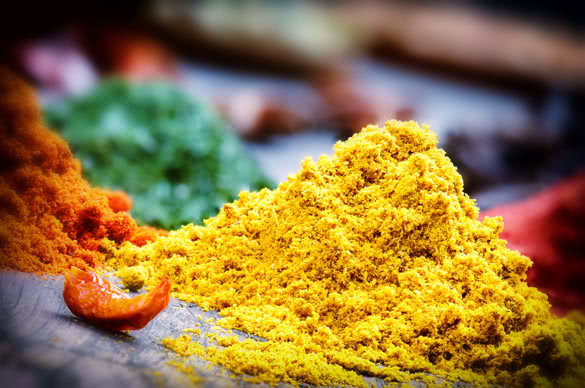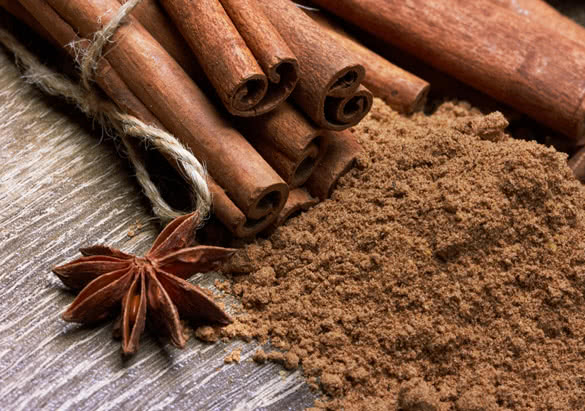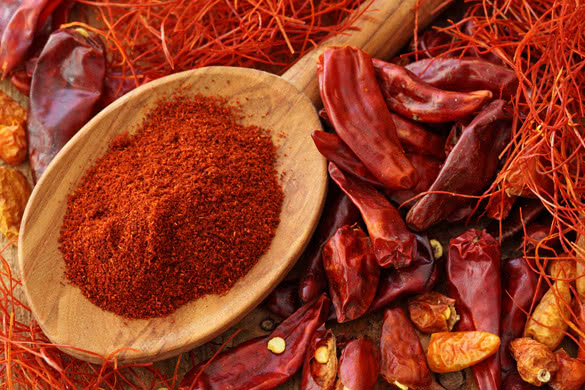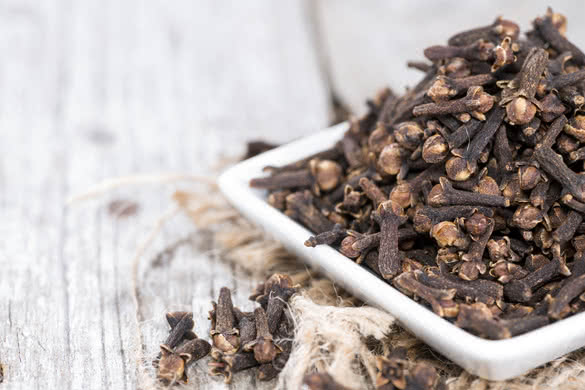Born in Malaysia, I have been exposed to curries and spiced rice since I was a toddler. Malay cuisine, after all, has its origin in Indian cuisine.
Nowadays, we can easily find premixed packets of spices for all kinds of dishes. However, I think it is fun to get to know individual spices before you head out to your local Asian supermarket to buy a korma spice-mix or a tandoori-mix, don’t you? Here are the top 10 Indian spices and their uses.
#1 Turmeric
This is one of my favorites, which is why hence I always have a packet readily available in my spice cupboard. This spice is extremelyly flexible to use, and does not have a strong flavor. Perfect for those of you who prefer milder taste. It comes from the root Curcuma, and, in terms of health benefits, it’s known to be an anti-inflammatory agent.
I like mixing just ½ a teaspoon of it into my uncooked rice (serving for two) before cooking it. It goes very well with most rice dishes.
#2 Green Cardamom
I like to call this the tiny green bomb because when you bite into it whole, the flavor literally explodes in your mouth.
This is normally used as a flavouring agent in desserts or tea, as it is known for helping with your digestive system. So if you like your warm cup of chai after a heavy meal, why not throw one or two green cardamom into it to enhance its flavour, while letting it help with your digestion?
#3 Cinnamon
For all you cinnamon roll lovers, do you know how widely used this spice is in Indian cuisine?
If you don’t know already, cinnamon sticks are made from rolled tree bark then dried before being put into storage. I like to add at least one or two sticks to my curry dishes. It is also often used in Pilaf or Briyani. The best way to bring out the flavor is to first heat it with cooking oil in your pan/wok. Once the oil absorbs the flavor, the food that is cooked with it will also soak up the taste.
Studies have proven that cinnamon helps to regulate blood sugar. As a result, it helps you maintain a more stable level of energy. So, keep a bottle of ground cinnamon handy, and whip it out to sprinkle over your desserts or your cappuccinos as another way to enjoy this versatile and healthy spice.
#4 Cumin Seeds
This spice is often used in curries. It is ground along with other spices then used to marinate meat before adding it to a curry dish.
If you’re feeling adventurous and would like to try this spice in a non-curry dish, try adding some cumin seeds to your fried chicken. Follow your usual fried chicken recipe, add a pinch of cumin to the seasoned flour that you bread your chicken with then fry the chicken. I can assure you this dish will smell and taste so much better.
#5 Red Chilli Powder
All you need to do is picture red tandoori chicken, or that bowl of steaming hot red curry, to know that this is the primary ingredient that produces that image, and of course the eye-watering sensation, depending on the type of chillis used in the powder.
Do you know that chilli can help to control your cholesterol level? So don’t hesitate when you’re tempted with a red curry recipe. Pile on the red chilli powder. You can look forward to a “body-cleansing” ritual by sweating it out while slurping the yummy curry soup.
#6 Carom Seeds
This is another very strong spice, and is a common ingredient in Ayurvedic medicine. Food-wise, it is normally found in pickles or tadka (a dal dish).
Indians like this spice for its medicinal values, like curing diarrhoea or just to relief a normal day stomach ache.
#7 Ginger
Indian cuisine normally uses ginger in its ground form. Rasam, a South Indian soup, typically contains ginger along with tamarind juice and other spices. Another common use is in the ginger chai. I find this drink extremely comforting when I have a cold.
Fresh ginger is not often used in Indian cooking, but you might find it in Chinese stir-fries or steamed dishes.
#8 Cloves
Do you know that cloves are dried up flower buds? They are used extensively in Indian cuisine, and are one of the main spices in the Garam Masala dish.
Cloves are considered to be natural painkillers and they help to kill germs. So, apart from using it in your cooking, you can add it to your tea when you have a sore throat.
#9 Coriander Seeds
These light brown, small, round seeds, also known as cilantro, have a nutty flavor. Proper Indian cooking requires freshly ground coriander seeds instead of the readily ground powder that you can get from supermarkets. This is because the flavor fades when it is ground long before you can use it.
Coriander seeds are used in most Indian dahl dishes. Like cinnamon, coriander seeds also help in regulating blood sugar and cholesterol levels.
#10 Black Cardamom
Its bold flavor and larger form has earned it the title of Queen of Spice. It is also commonly found in most Indian dahl and curry dishes. Indians also use cardamon oil in flavoring drinks and liquors – even perfume can be flavored with this spice. As the intense flavor takes time to seep out, black cardamom, when used whole, is good for making braised dishes.
So there you go: 10 Indian spices to introduce to your kitchen. Have a wonderful and flavorful time trying them out, but remember to start with very small portions.
















Oh, wow. This is a fantastic article. I absolutely love Indian food and while I often stick to those ready made mixes and marinades I’ve been trying to get more adventurous, especially since attending an Indian cooking class with my husband. I love all the ways you suggested incorporating a little Indian flair into teas and the fried chicken idea? Brilliant. I don’t generally make fried chicken but it gave me a great idea for a sort of chicken parm Indian style (I blaspheme, I know!). Thanks for so many great ideas!
Hi Nancy,
Thank you very much for your enthusiasm on this article. I’m glad it provides you with further inspirations on how to use spices! Nothing wrong with chicken parm Indian style. :) My first thought was to add turmeric and some paprika/chilli powder to have a gentle start in fusion-ising this dish. However you try it, good luck and hope you enjoy the results.
super!!!